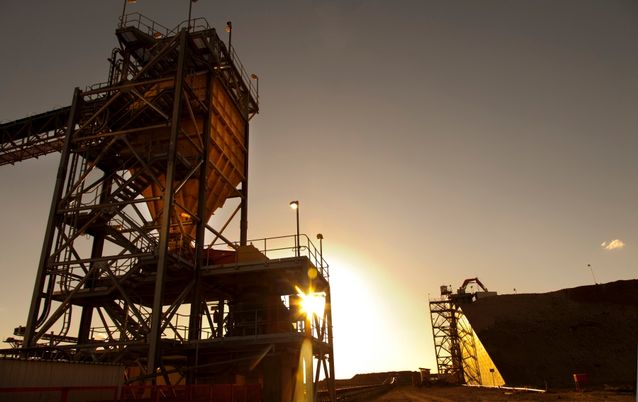REPORTS that China’s medium-term growth is likely to moderate even further than forecast should have set off alarm bells for local commodities producers.
Last week both the World Bank and the International Monetary Fund (IMF) made it clear that the Chinese government would have to move away from accommodative fiscal and monetary policies soon, or run the risk of "perpetuating a traditional growth model that relies on government-led investment fuelled by credit expansion".
The World Bank now expects China’s economy to grow 7.6% this year and then slow to 7.5% next year, while the IMF is more cautious, predicting that Chinese growth will meet its target of 7.5% this year and then slow to about 7% next year. Both warn of significant downside risks for future growth projections if China fails to address instability in the fiscal and financial sector.
Although the Chinese government unveiled a programme of broad reforms in November aimed at reducing its reliance on investment and exports, the World Bank believes the government still needs to address the rapid accumulation of local government debt as well as the build-up of credit in the economy overall if it is to sustain its current growth trajectory.
Investment-led growth and high levels of debt have raised concerns that China could be at risk of a property bubble, which threatens to destabilise the entire economy if it should burst. Official customs data released on Sunday compounded market fears and put additional pressure on already strained global commodity prices when they showed that China’s imports of major commodities fell last month as companies scaled back on orders to counteract excess inventory.
Over the past month the benchmark price of iron ore has fallen more than 11%.
Prices for steel-making coal have slumped by half since the start of 2012, while iron-ore prices have dropped to less than $95 a tonne from a peak of more than $190 in 2011. The prices of copper, gold and other commodities have also come under pressure.
The effect on the bottom line of miners has been marked. According to global advisory firm PwC’s 11th annual survey, Mine, the total net profits of the top 40 global mining companies plunged 72% last year to their lowest point in a decade.
As China is the world’s largest importer of raw materials and buyer of two-thirds of the world’s seaborne iron ore, the fall in imports and resultant slide in commodity prices could spell disaster for mining companies, many of which are already operating on squeezed margins.
This is particularly true in South Africa, where rising administered costs such as electricity, combined with increasingly uncompetitive labour costs and the ever present fear of strike action, make mining an unattractive investment.
Aside from a general slowdown in the world’s second-largest economy, the biggest concern to commodity producers — iron-ore producers especially — is the effect of the necessary transition from an asset-based, fixed income economy to a consumer economy. The result will be reduced demand for iron ore and coal, the mainstay products of big mining companies such as BHP Billiton and Rio Tinto.
Although China’s transition from a fixed-asset, production driven economy to a consumer driven economy will be negative for steel and iron ore, it could be positive for other commodities such as copper and zinc. With this in mind, local miners will be forced to make structural changes of their own if they are to remain profitable in future.
These include improving their productivity through more efficient labour and equipment, streamlining their supply chains, and diversifying their operations to take advantage of changing patterns of demand.
If they thought the recent past was tough, the next few years will be more challenging still.




















Change: -0.47%
Change: -0.57%
Change: -1.76%
Change: -0.34%
Change: 0.02%
Data supplied by Profile Data
Change: -1.49%
Change: -0.01%
Change: -0.47%
Change: 0.00%
Change: -0.08%
Data supplied by Profile Data
Change: 0.36%
Change: 0.84%
Change: 0.22%
Change: -0.22%
Change: 0.82%
Data supplied by Profile Data
Change: 0.28%
Change: -0.53%
Change: 0.20%
Change: -1.40%
Change: -1.88%
Data supplied by Profile Data